Parts and consumables:
- Coolant
- rags
- Container with a capacity of at least 10 liters
- Cooling Radiator Drain Plug (25318-3E000) (replacement recommended)
- Distilled water to flush the system
Note:
According to the manufacturer's recommendation, Hyundai Tussan antifreeze should be replaced after 3 years of operation or 45 thousand kilometers (whichever comes first).
Notes:
Use ethylene glycol based coolants (antifreeze). Change the coolant only when the engine is cold. The coolant is toxic, so be careful when handling it.
When starting the engine, the plugs of the expansion tank and radiator must be tightly closed. The cooling system is under pressure when the engine is running, so coolant may leak from under a loosely closed plug.
1. Install the Hyundai Tussan car on a flat horizontal platform.
2. Turn the radiator cap counterclockwise and remove it.
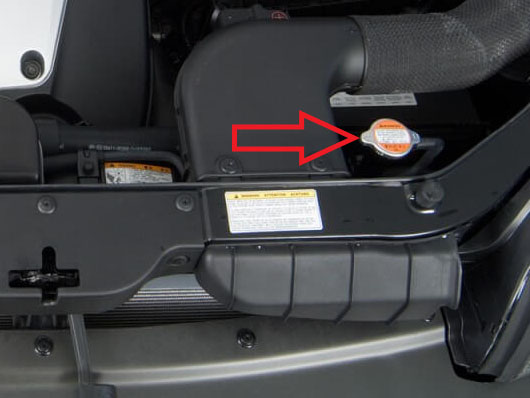
3. Remove the expansion tank cap.
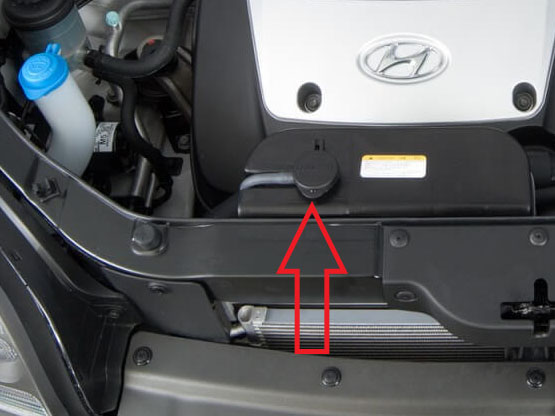
4. Place a container under the hose of the drain cock of the radiator of the cooling system, located at the bottom of the right radiator tank, unscrew the drain cock plug by 2-3 turns and drain the liquid.
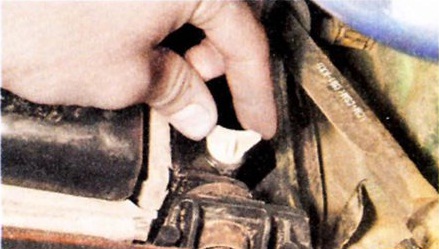
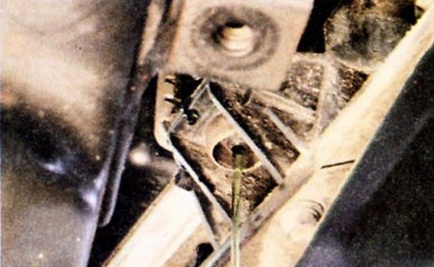
Note:
Antifreeze is deadly poisonous to all living things. In order not to pollute the environment, drain it from the radiator through a funnel (for example, made from a plastic soda bottle).
5. Tighten the drain plug by hand. It is recommended to replace the plug to maintain the tightness of the system.
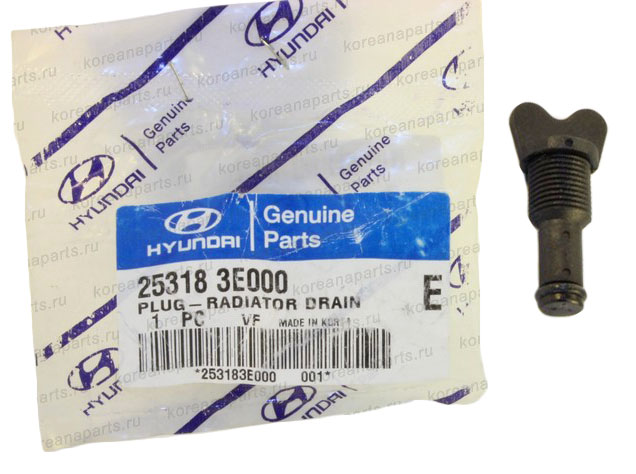
New Hyundai Tussan faucet for radiator drain
Note :
If the expansion tank is very dirty, then remove and wash it.
6. Flush the cooling system by slowly filling it with water through the radiator filler neck to the level of the vapor tube.
7. Start the engine and let it run until the electric fan turns on.
8. Stop the engine and drain the water.
9. Flush the cooling system until clean water begins to drain.
10. Fill the engine cooling system by slowly pouring coolant into the radiator to the level of the vapor tube.
11. Start the engine and warm it up to operating temperature (before turning on the fan). As air escapes from the system, add coolant to the radiator. Until the air is completely exhausted, the fan will turn off 3-5 times.
12. Replace the radiator cap and add coolant to the expansion tank up to the “F” mark. Then stop the engine and let it cool down.
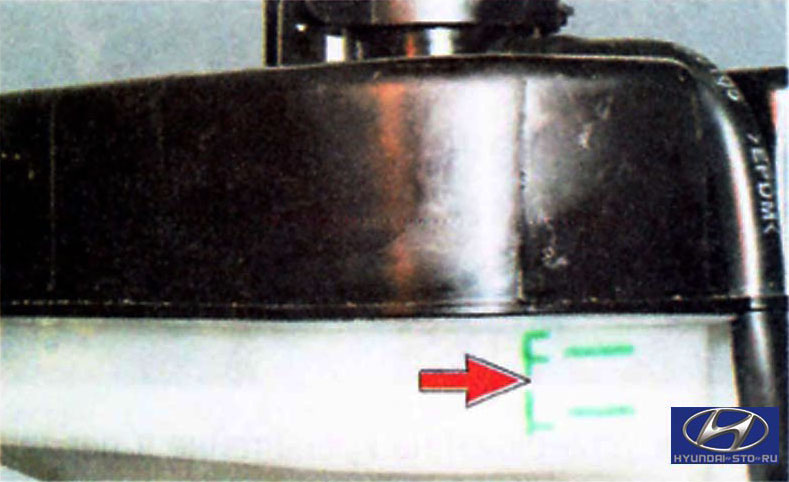
13. Check the coolant level and, if necessary, add it to the expansion tank up to the “F” mark.
Notes :
When the engine is running, watch the coolant temperature on the gauge. If the arrow has reached the red zone, and the radiator fan does not turn on, turn on the heater and check how much air passes through it. If the heater supplies heated air, the fan is most likely defective, and if it supplies cold air, then an air lock has formed in the engine cooling system. To remove it, turn off the engine, let it cool and unscrew the radiator cap. Start the engine, let it run for 3-5 minutes and tighten the radiator cap.
For better filling of the system without air pockets, periodically squeeze the radiator hoses by hand. After a few days of operation of the car after replacing the coolant, check its level. Top up if necessary.
If after a very short time the color of the fresh liquid turns brown, then you have filled in a fake, in which the manufacturer did not add corrosion inhibitors. In addition, one of the signs of a fake is a sharp complete discoloration of the liquid. The dye of high-quality coolant is very resistant and only darkens over time. The liquid, tinted with linen blue, is discolored. Such "antifreeze" must be replaced faster.
The article is missing:
- Photo of parts and consumables
- High-quality repair photos
Source: carpedia.club
The article is missing:
- The article does not match the car
The article lacks:
- Статья не соответствует машине
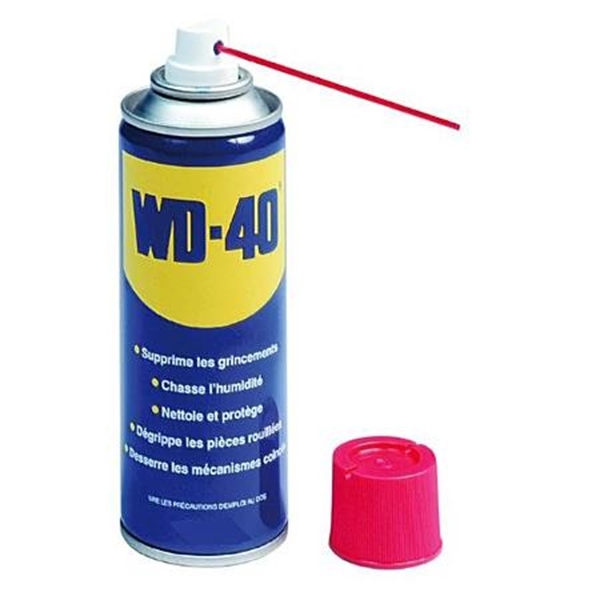
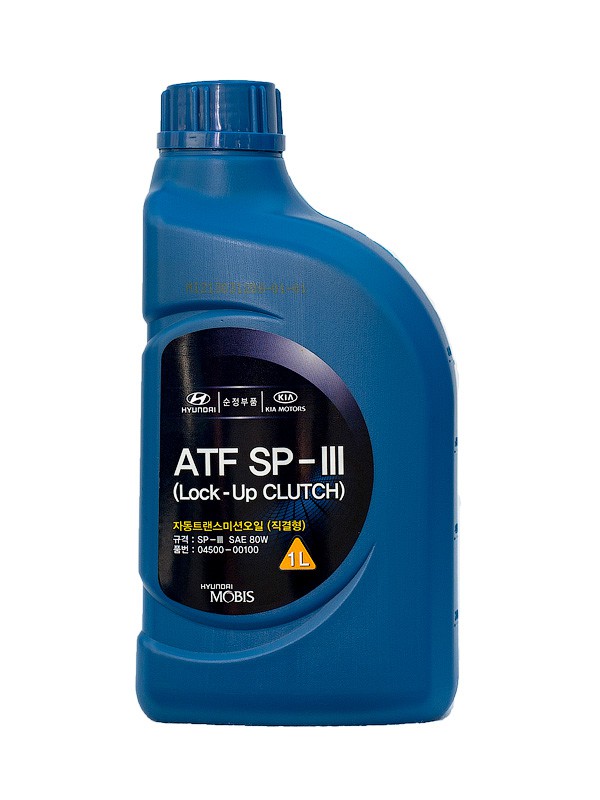
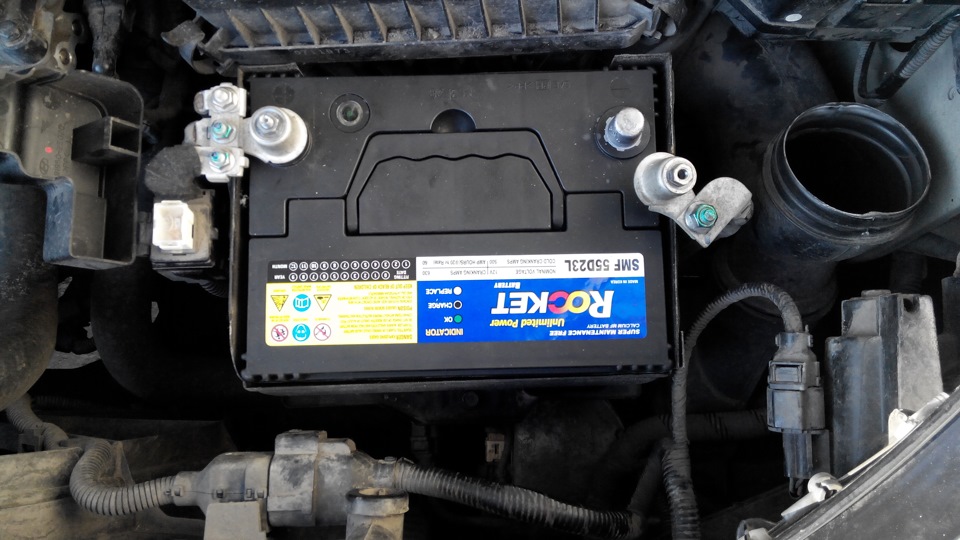
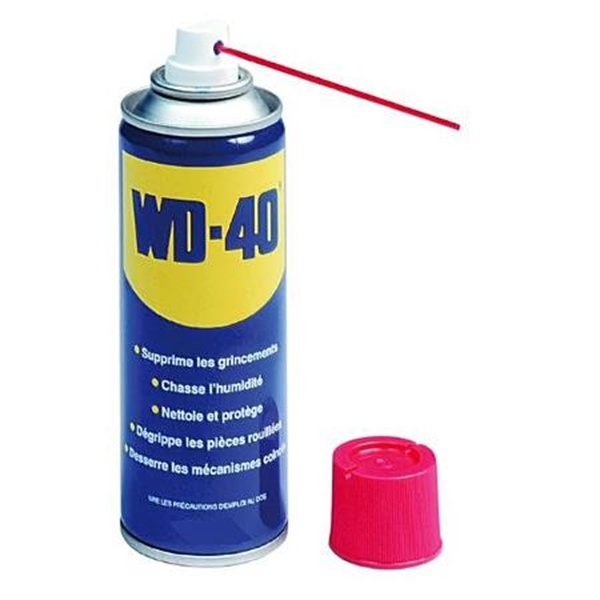
![1 generation [2004 - 2010]](/uploads/Hyundai_Tucson_2010_-_2004.jpg)
![2 generation [2010 - 2015]](/uploads/2016-hyundai-tucson.jpg)
